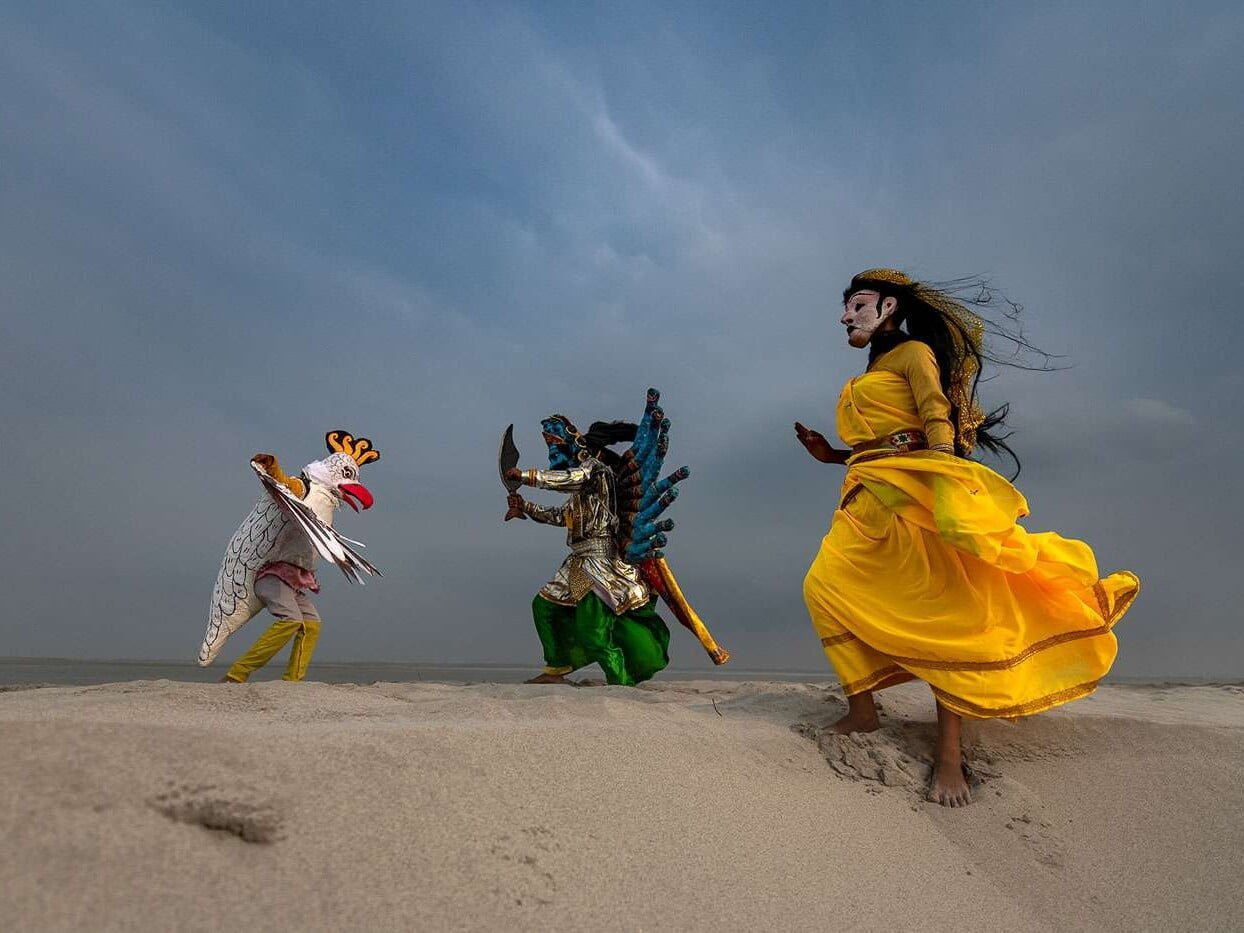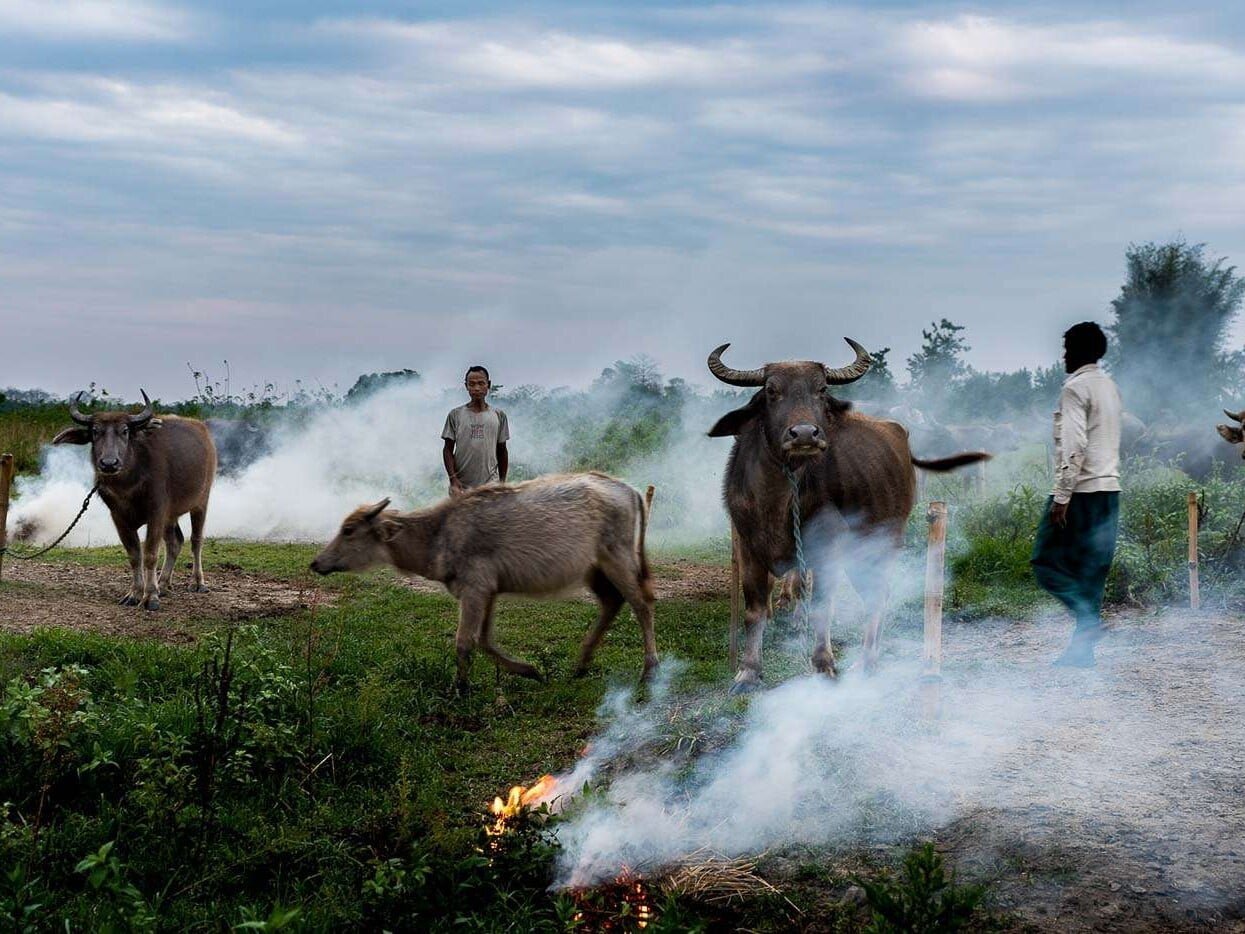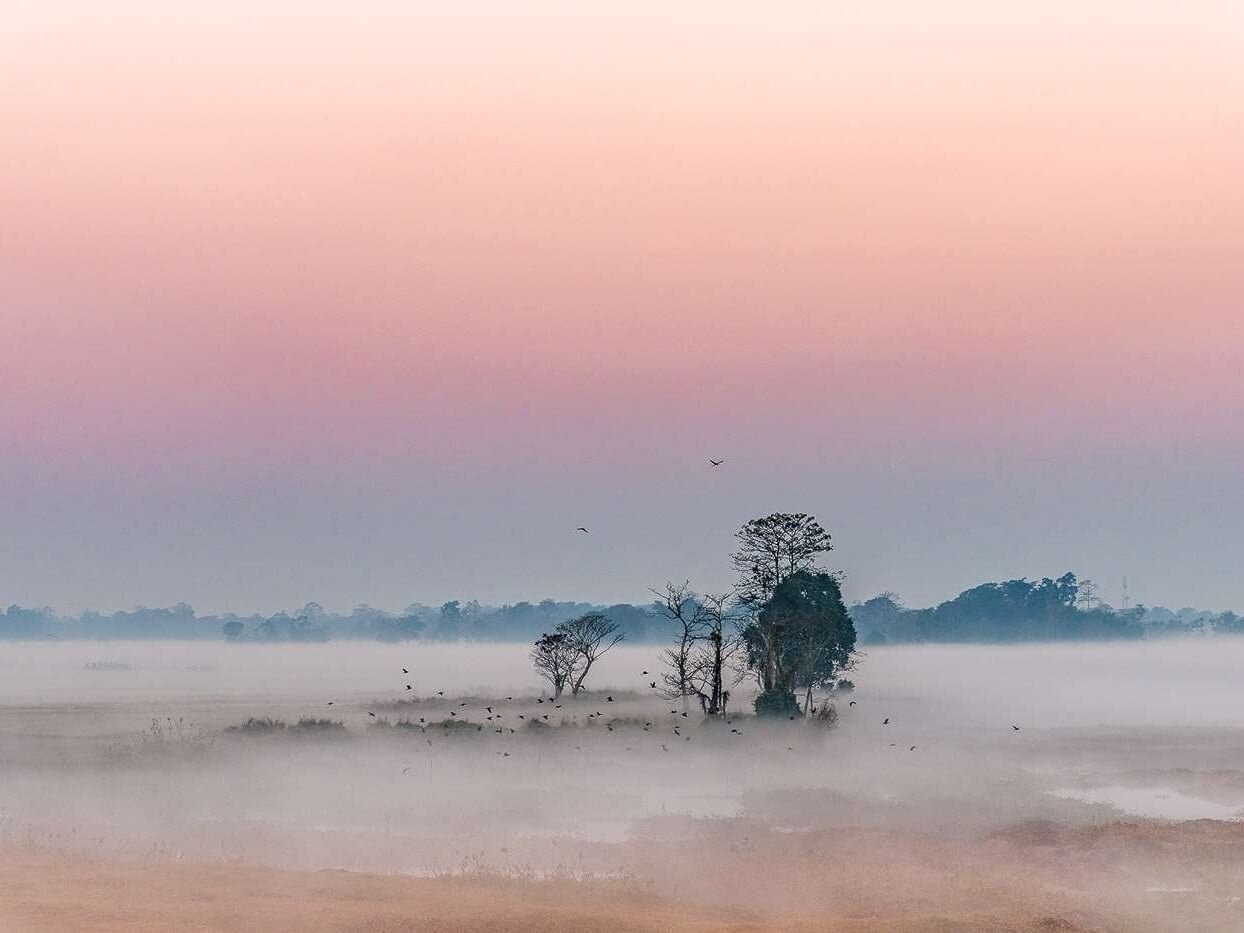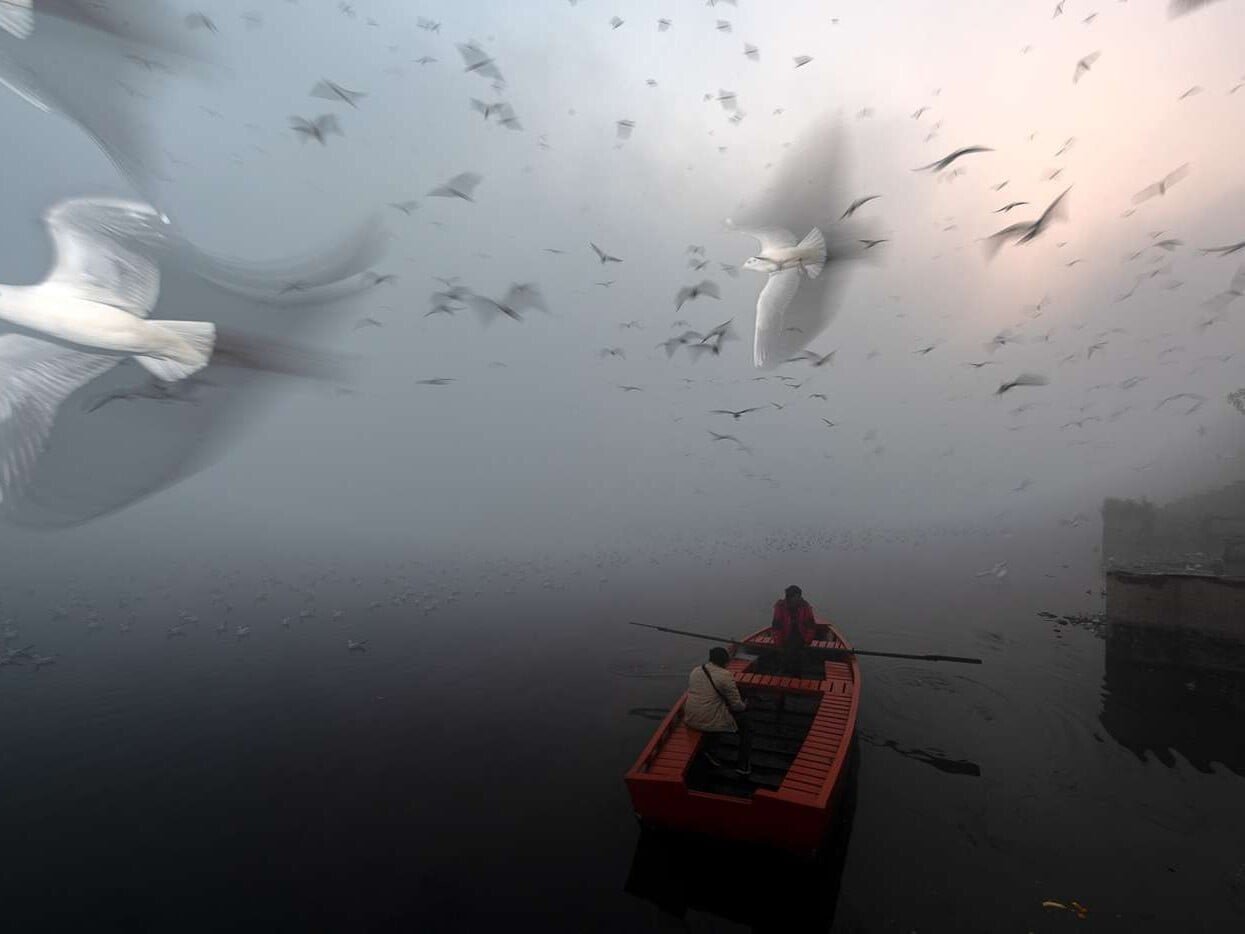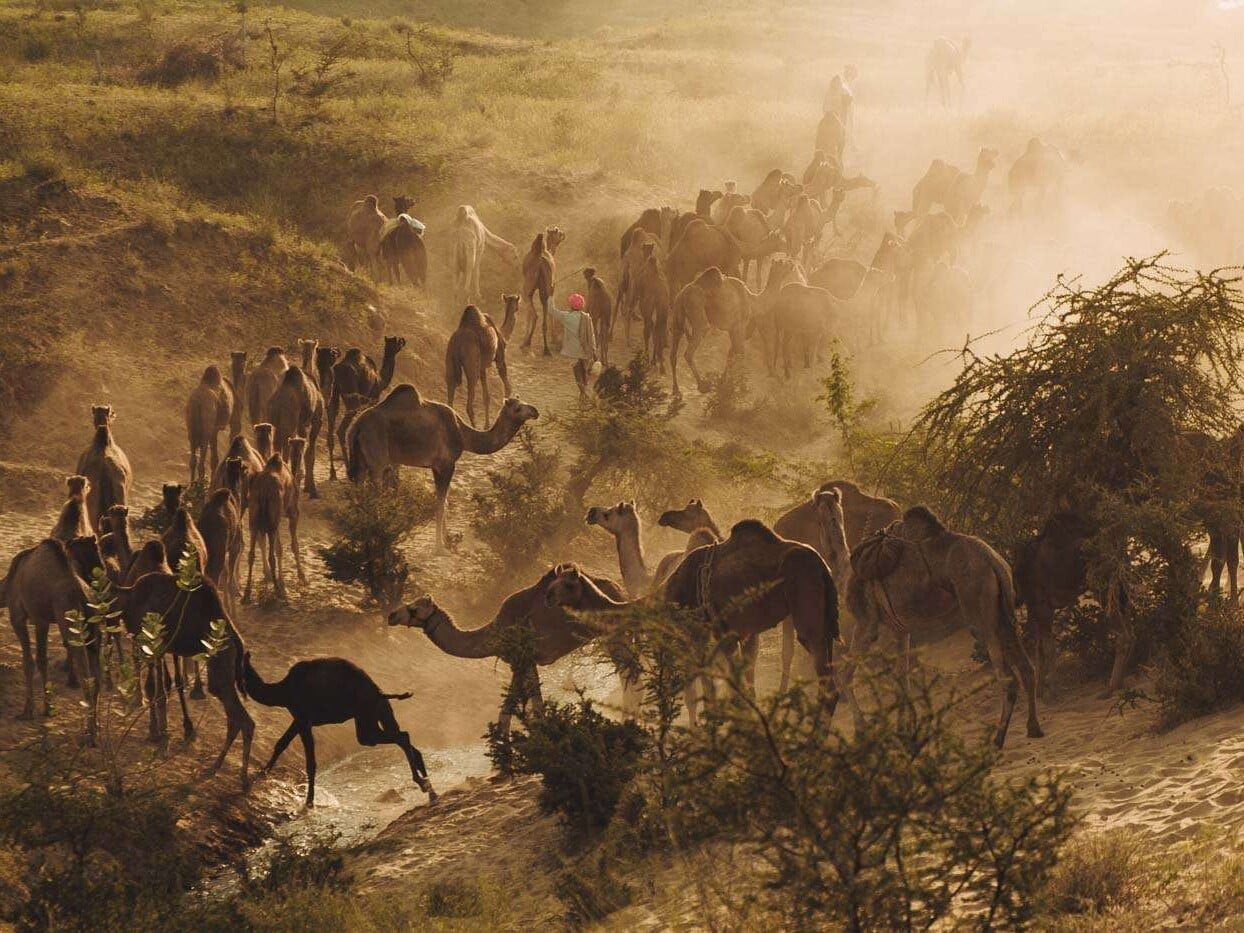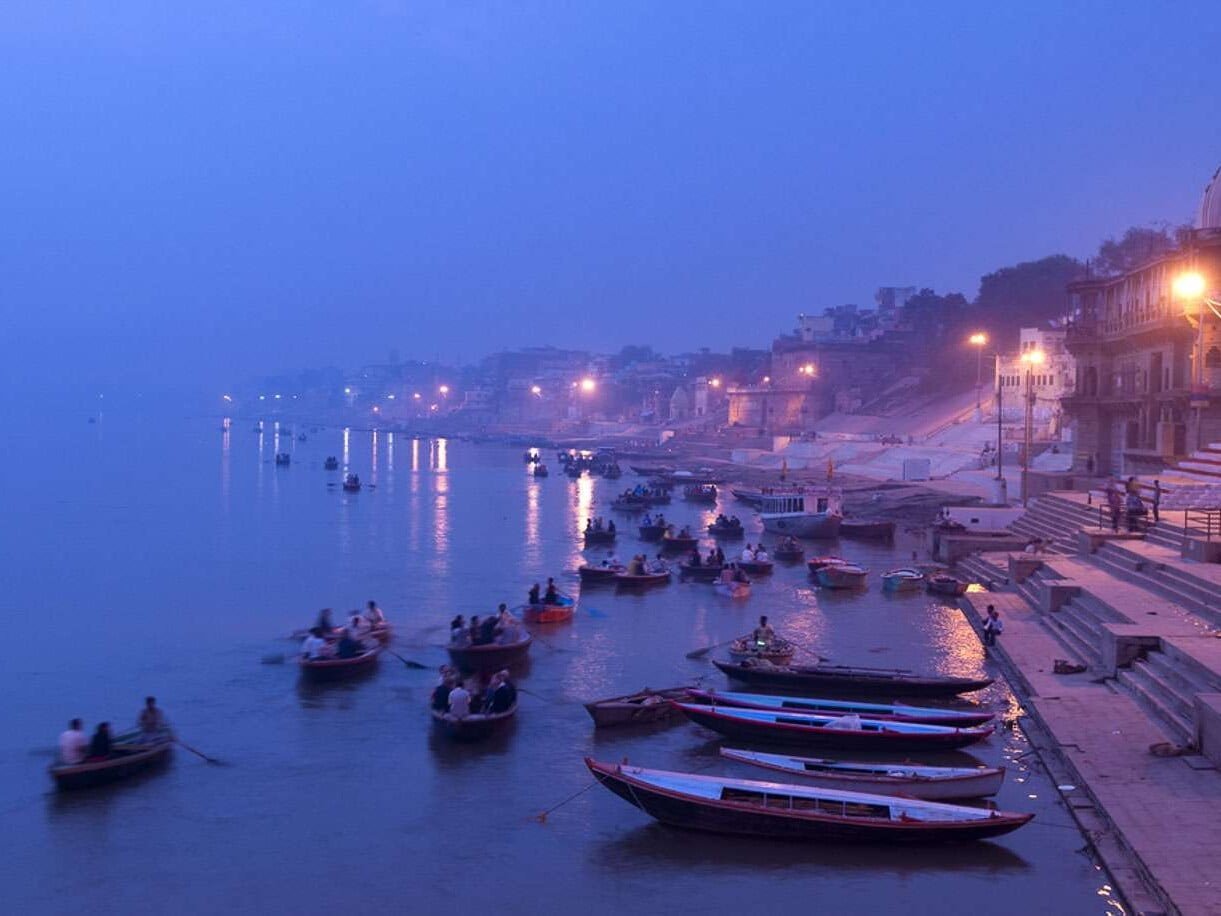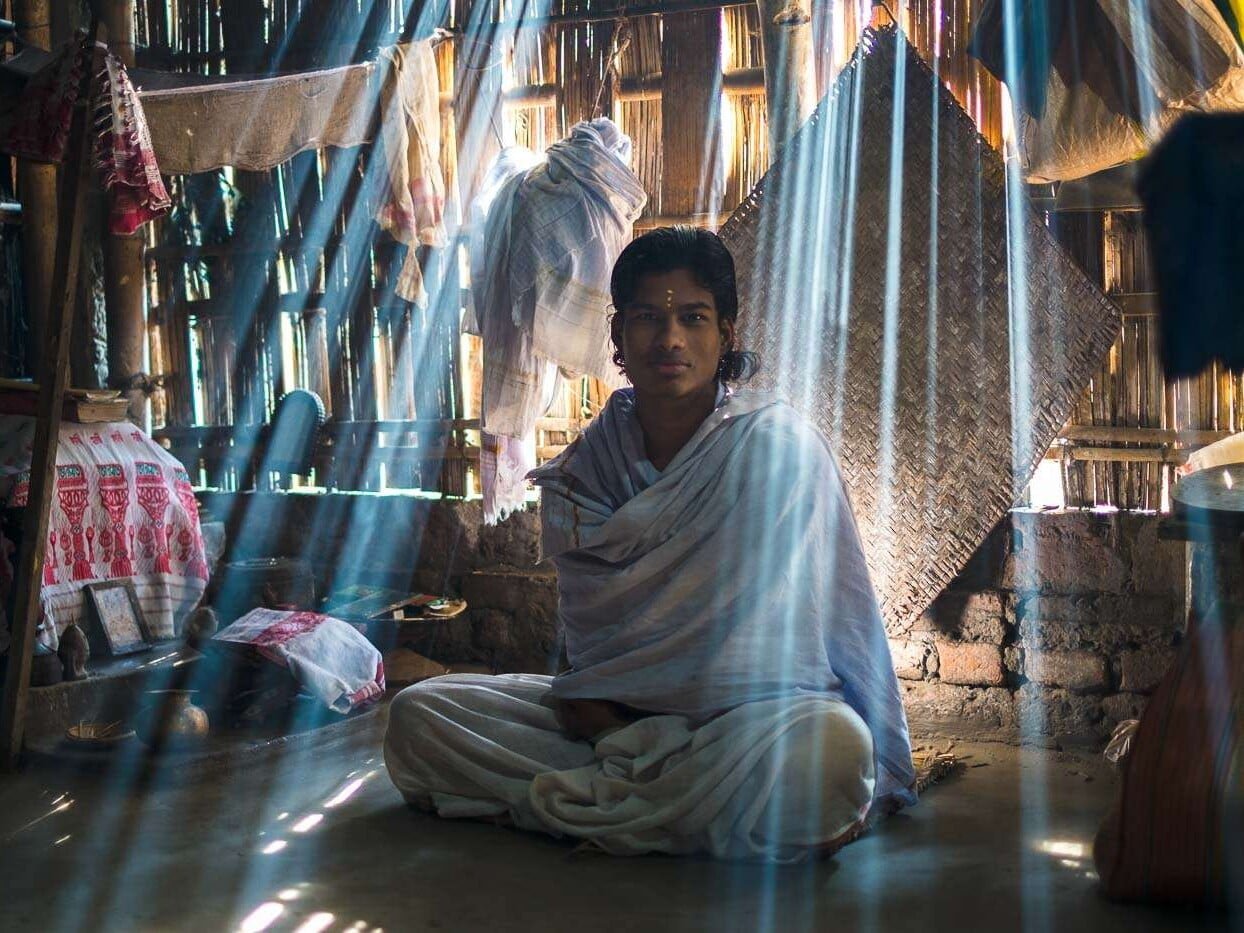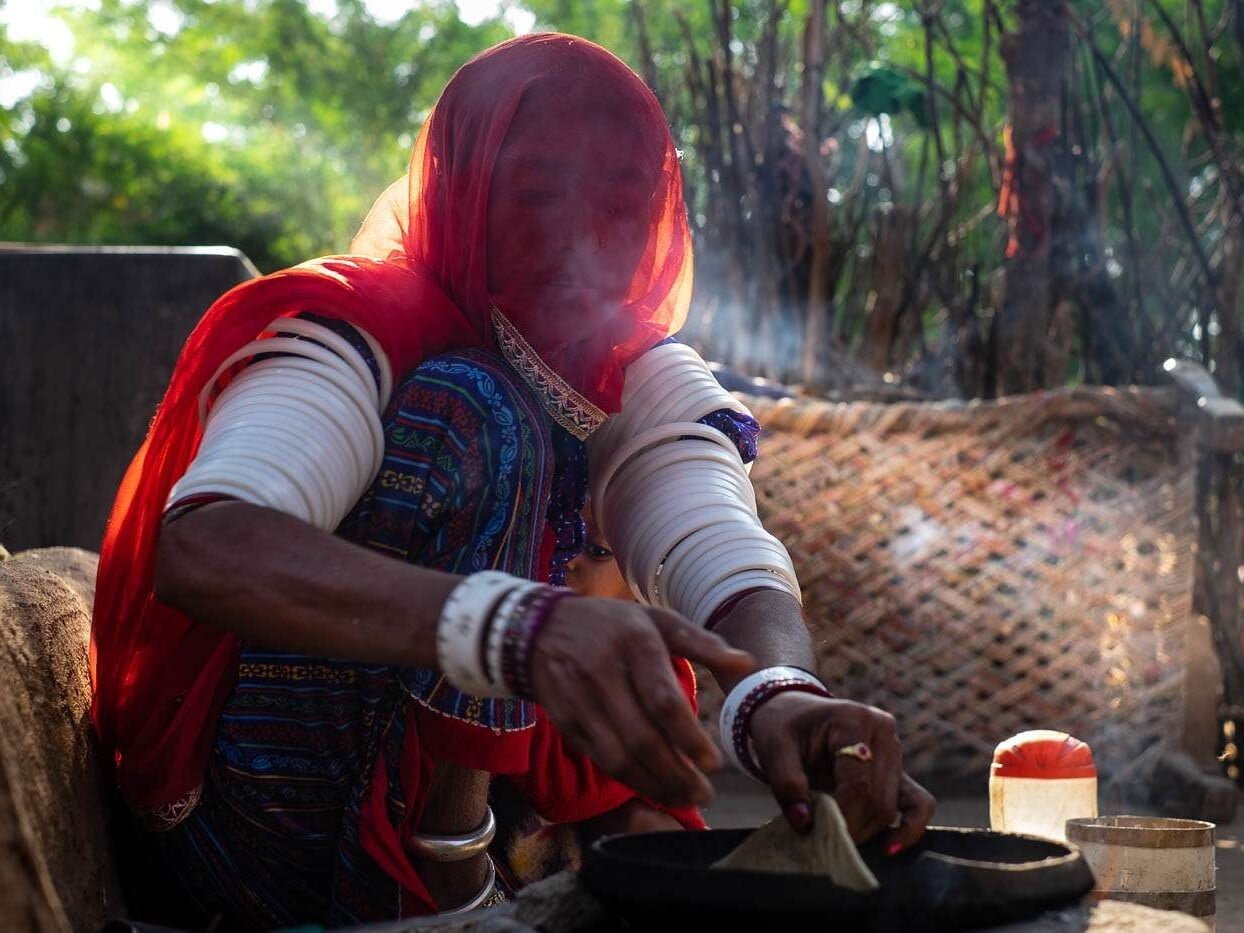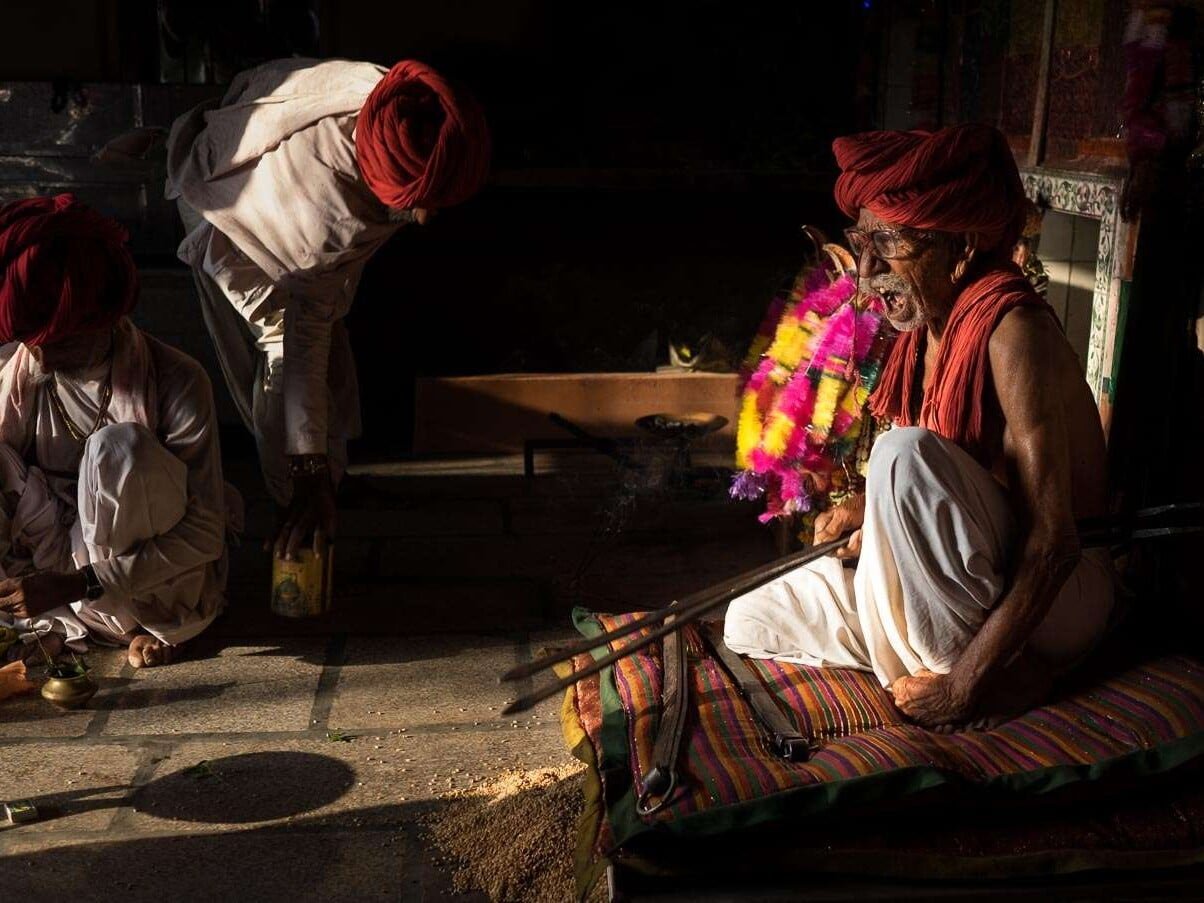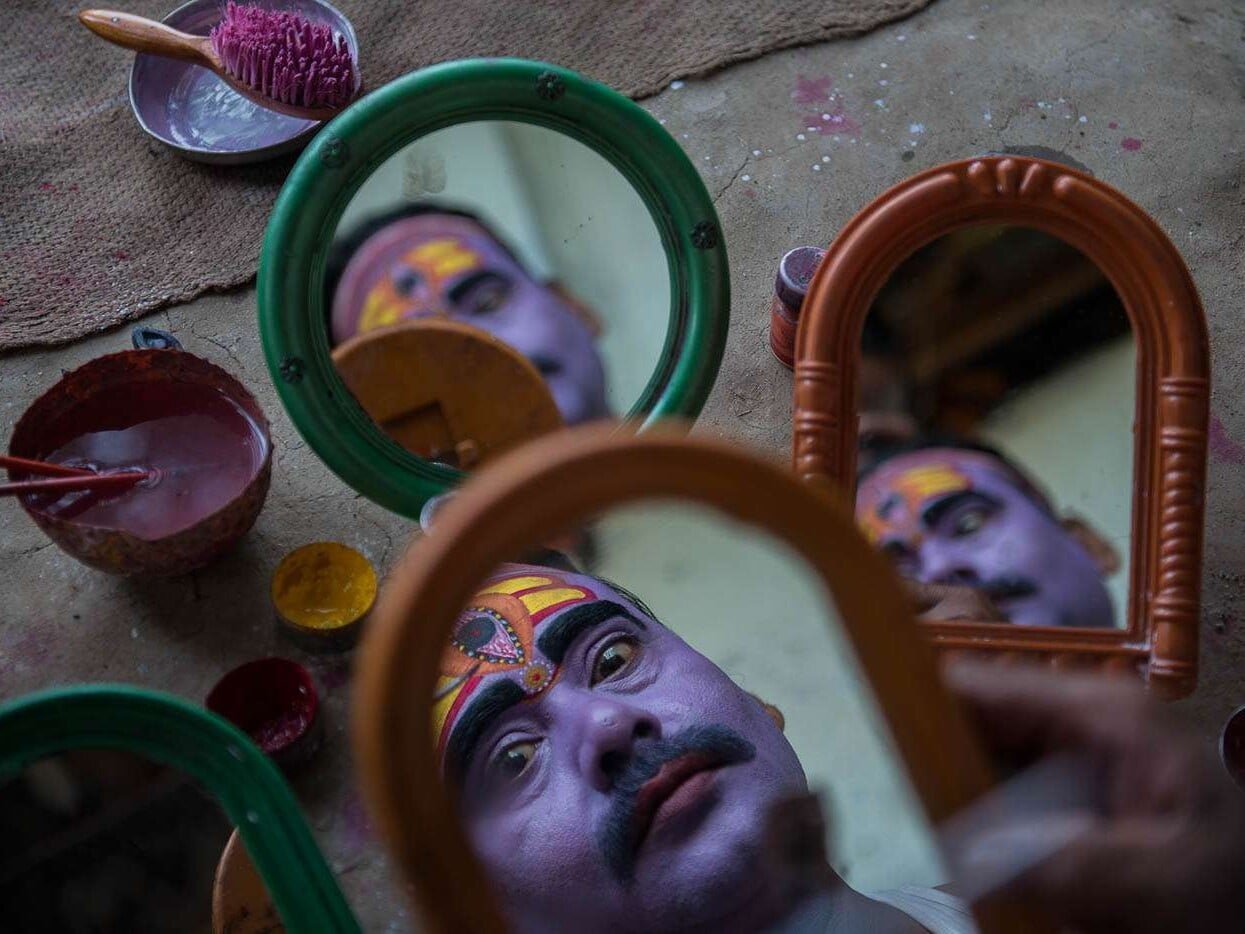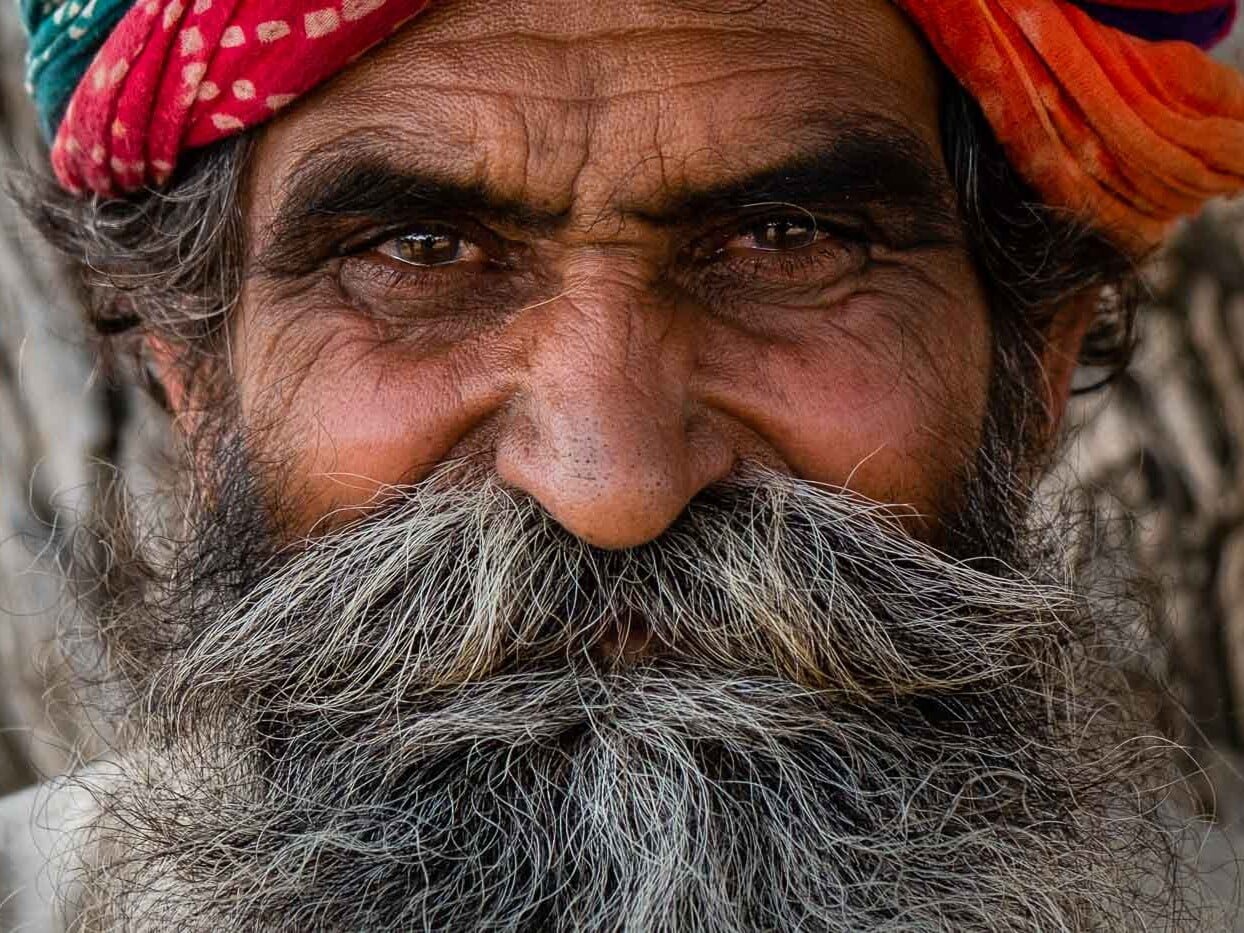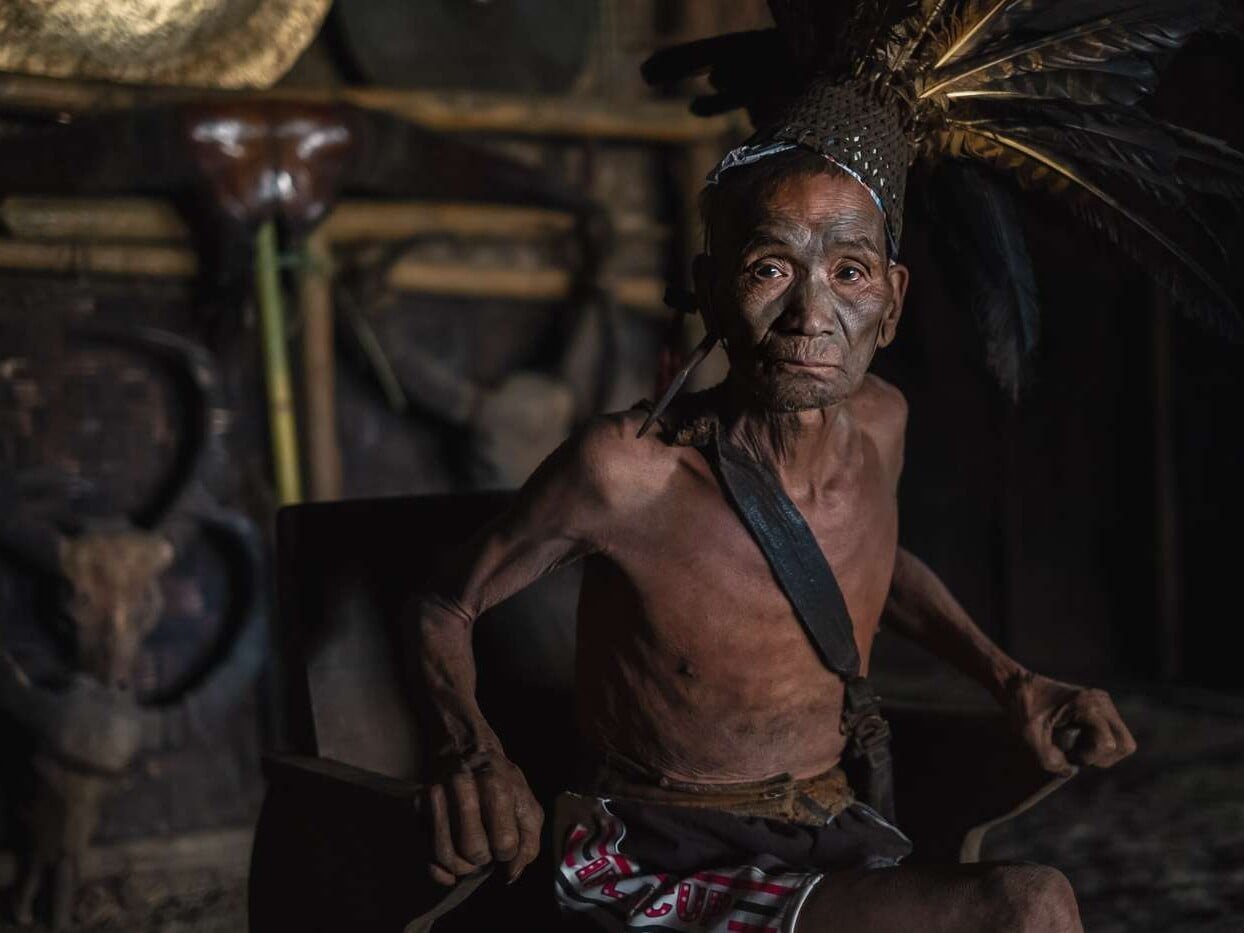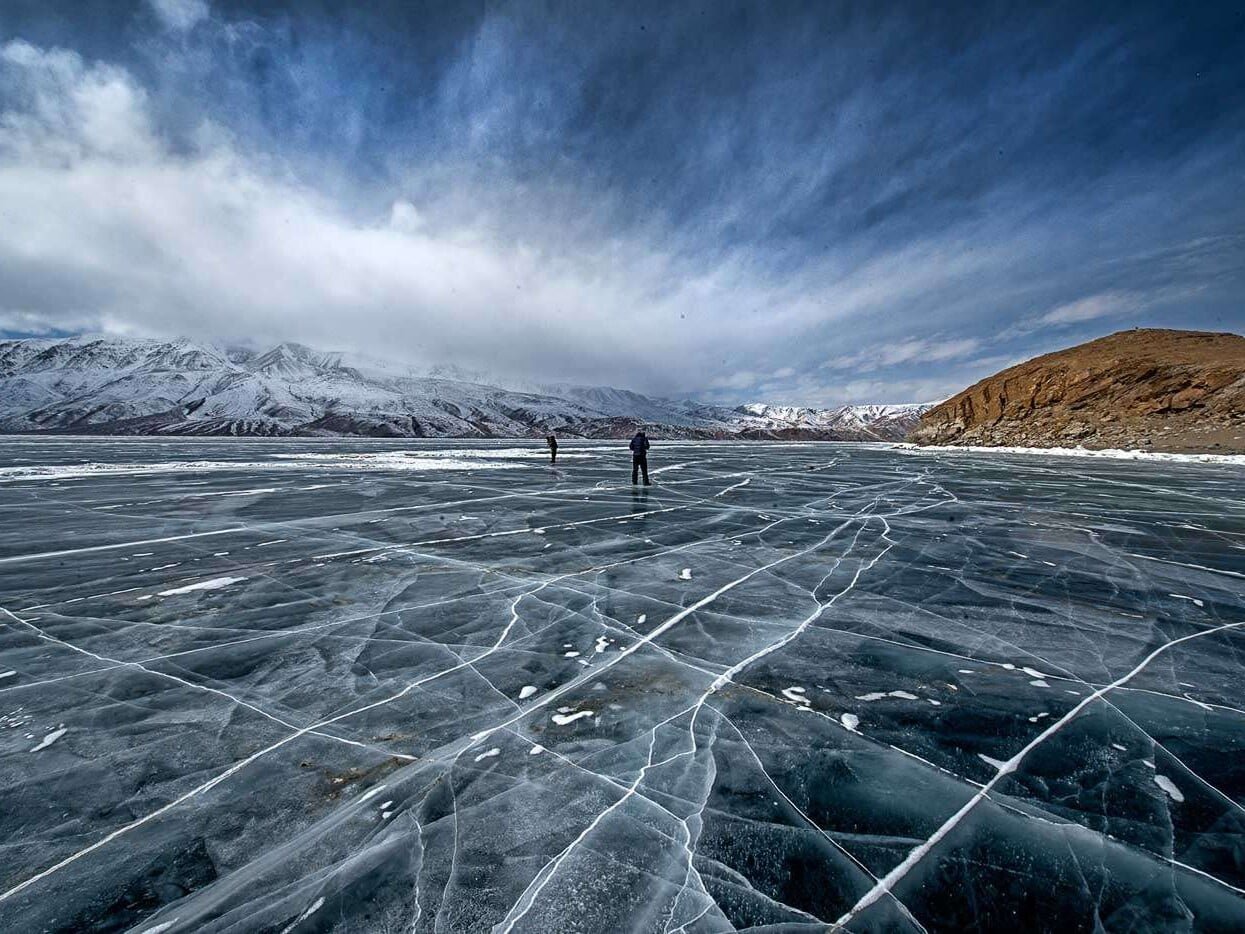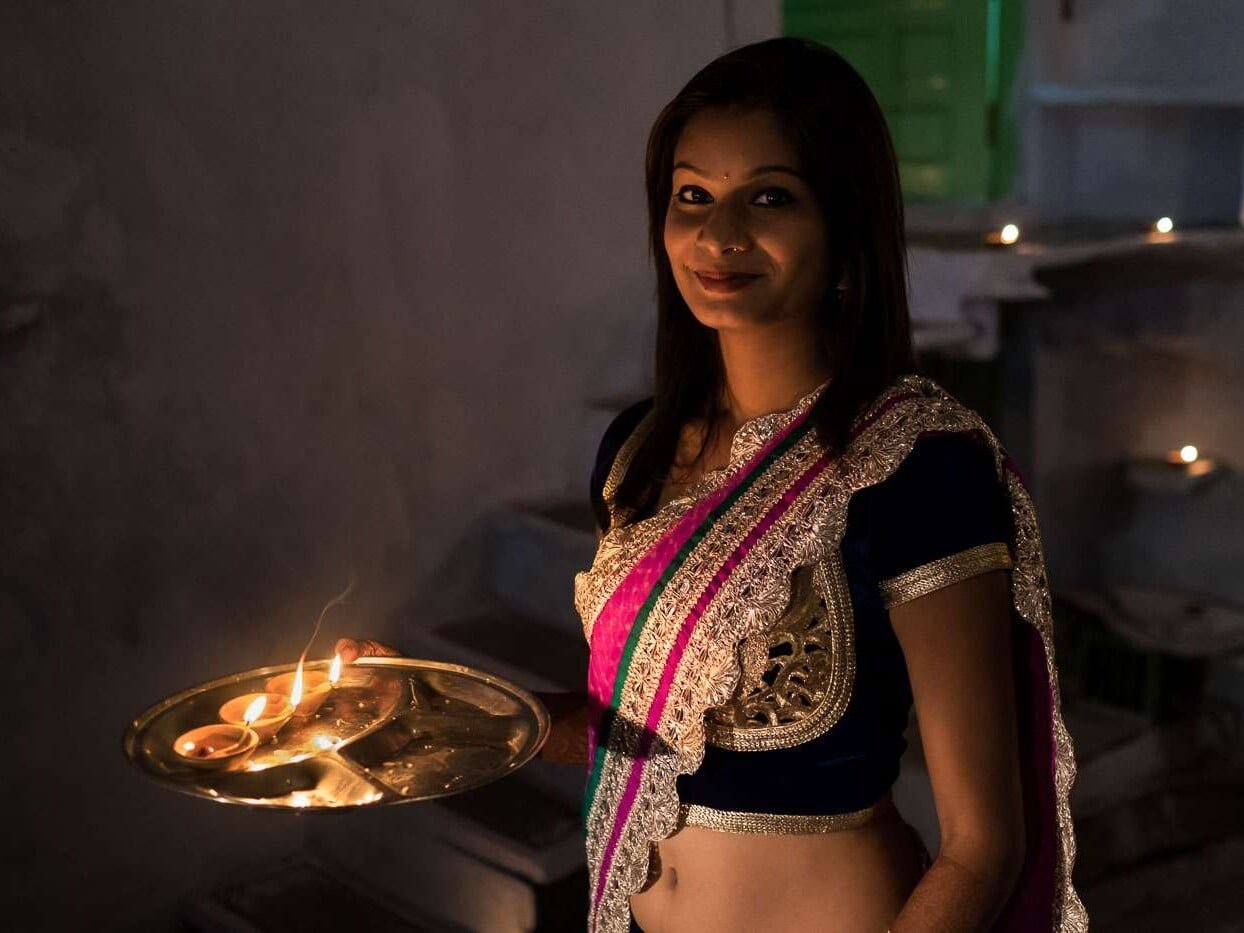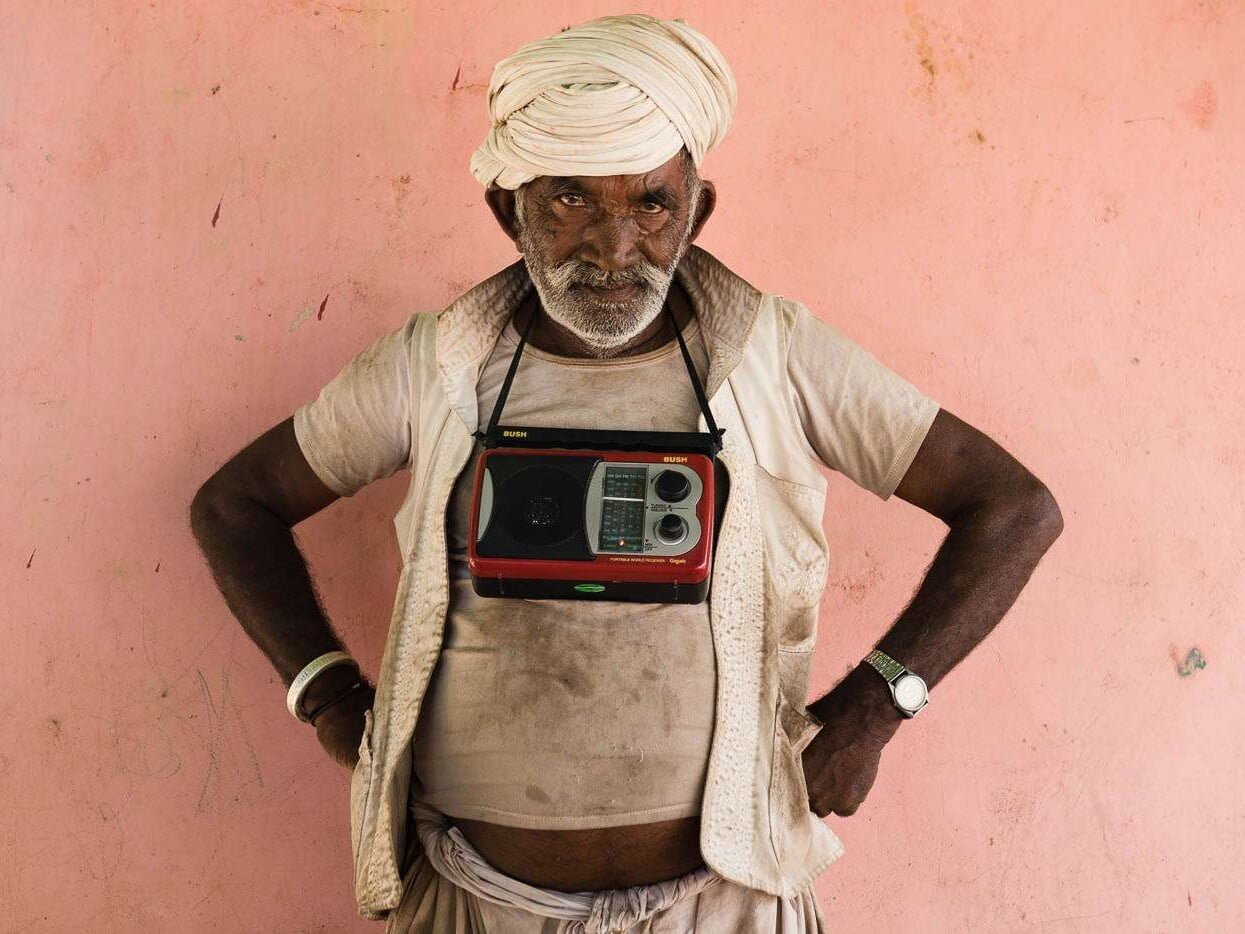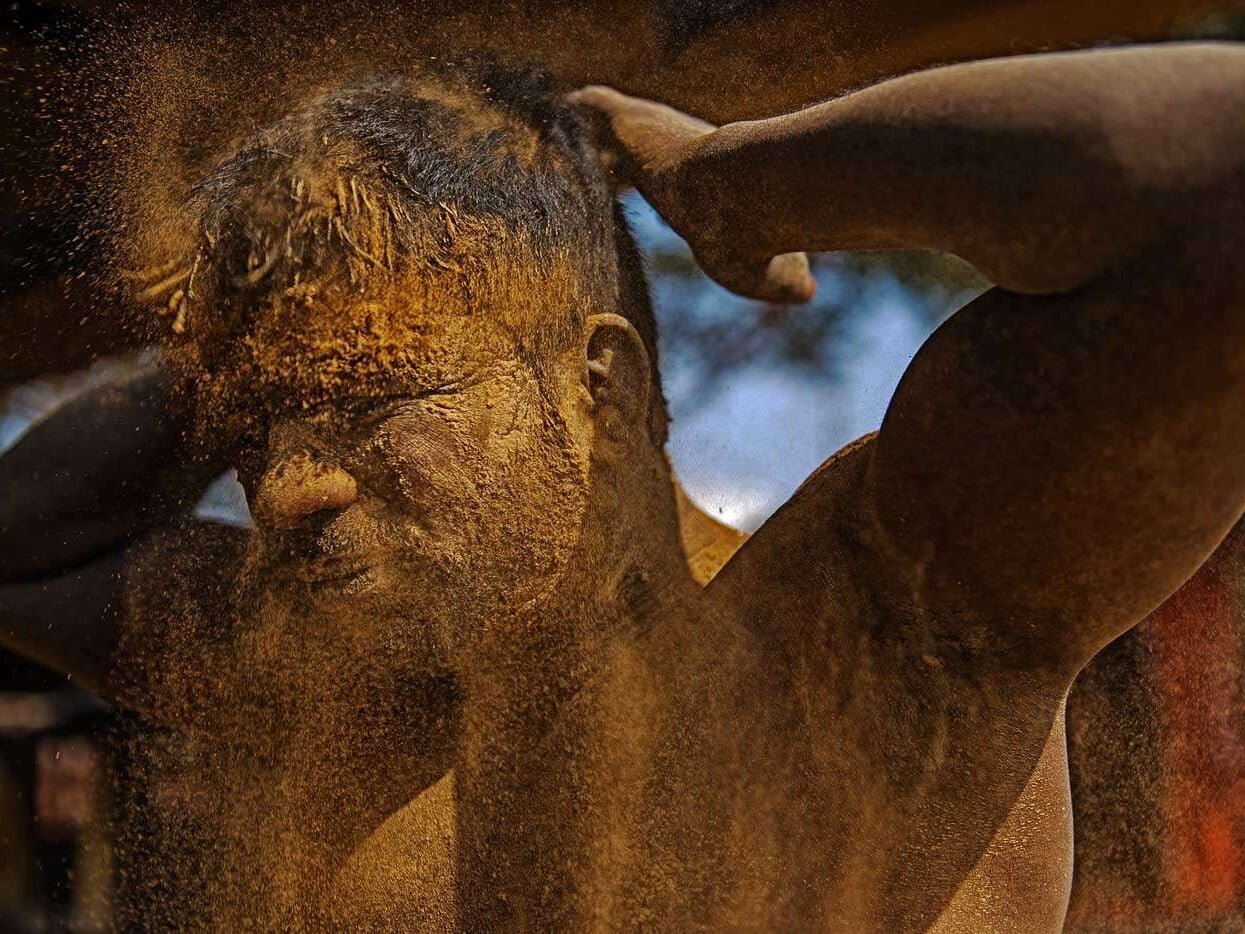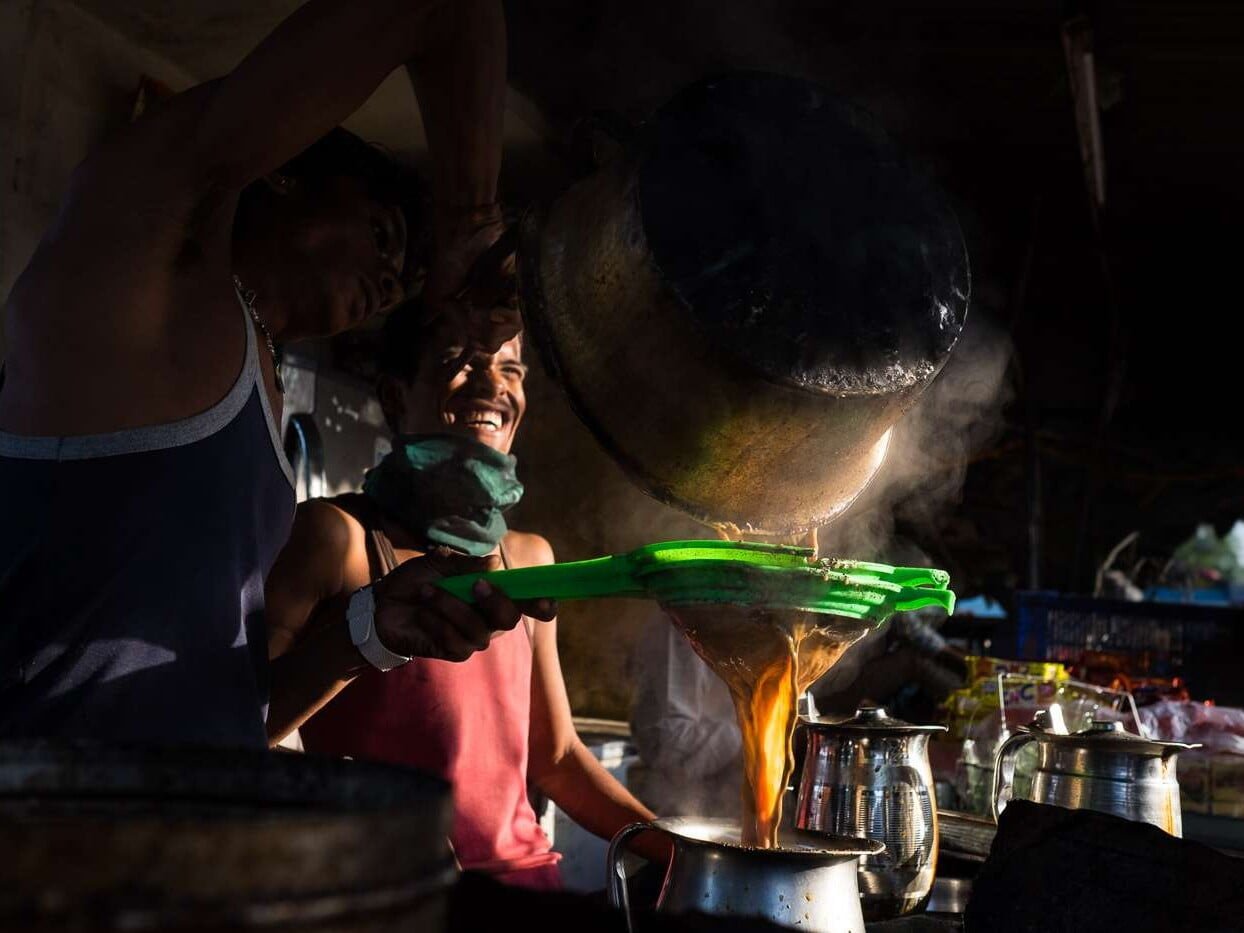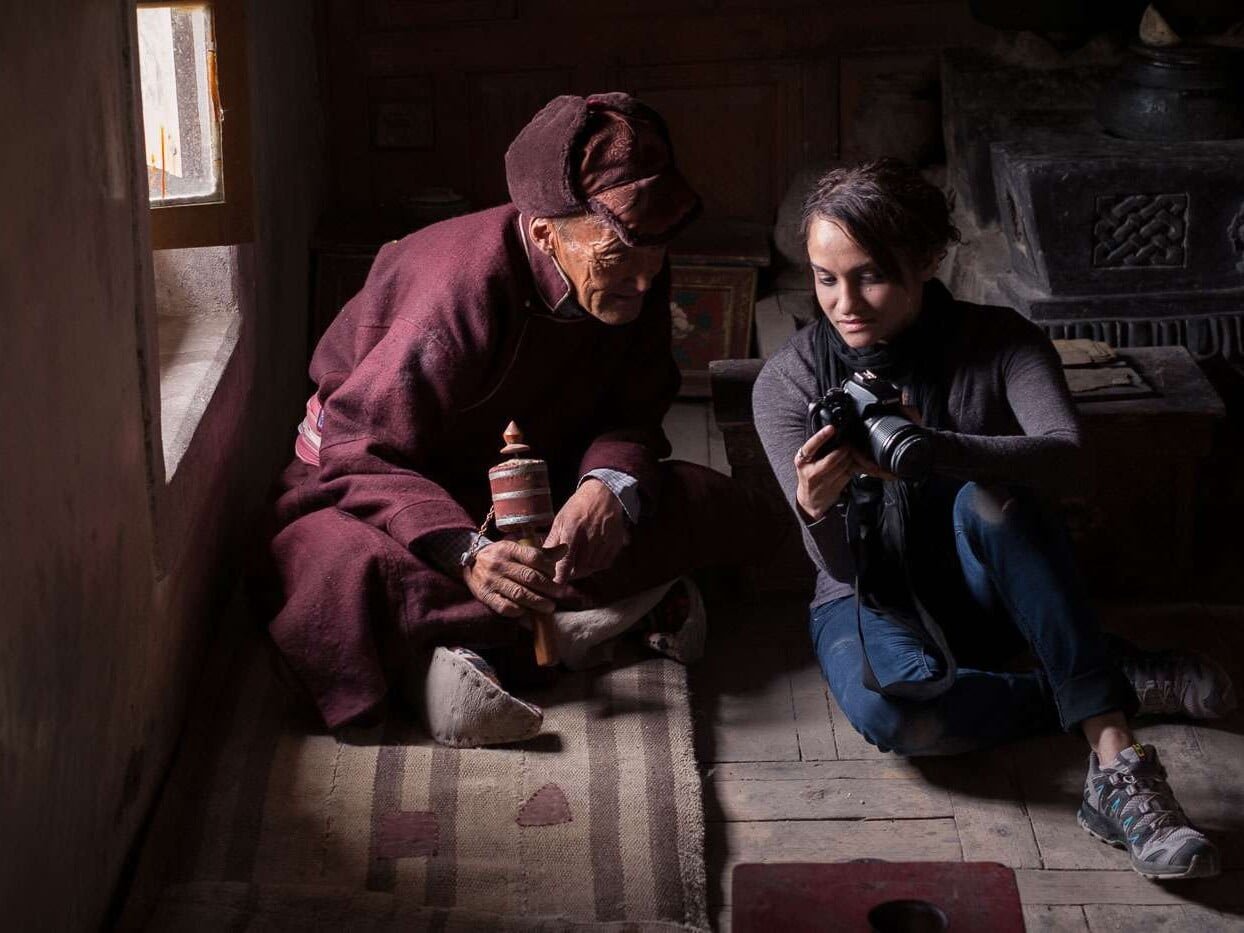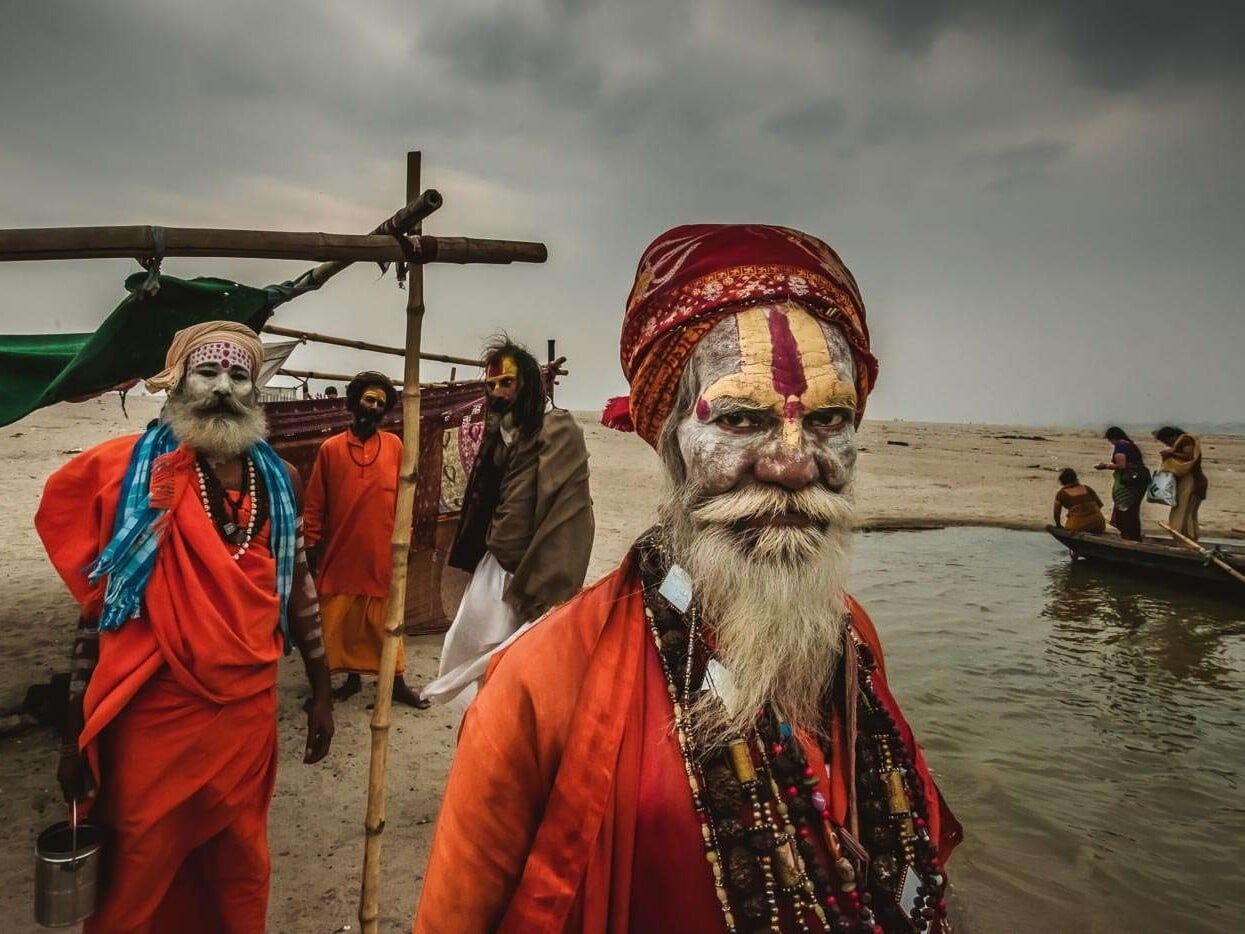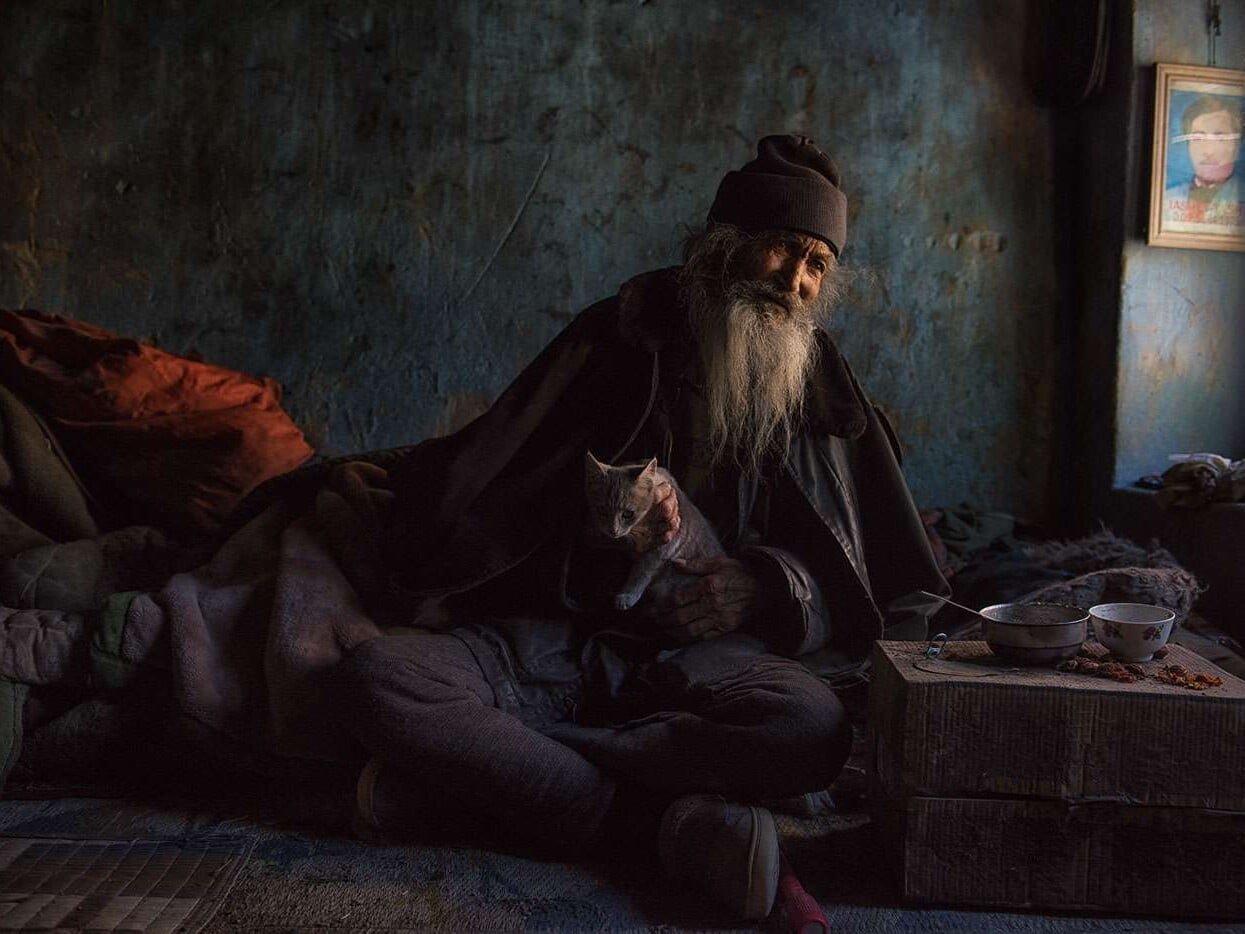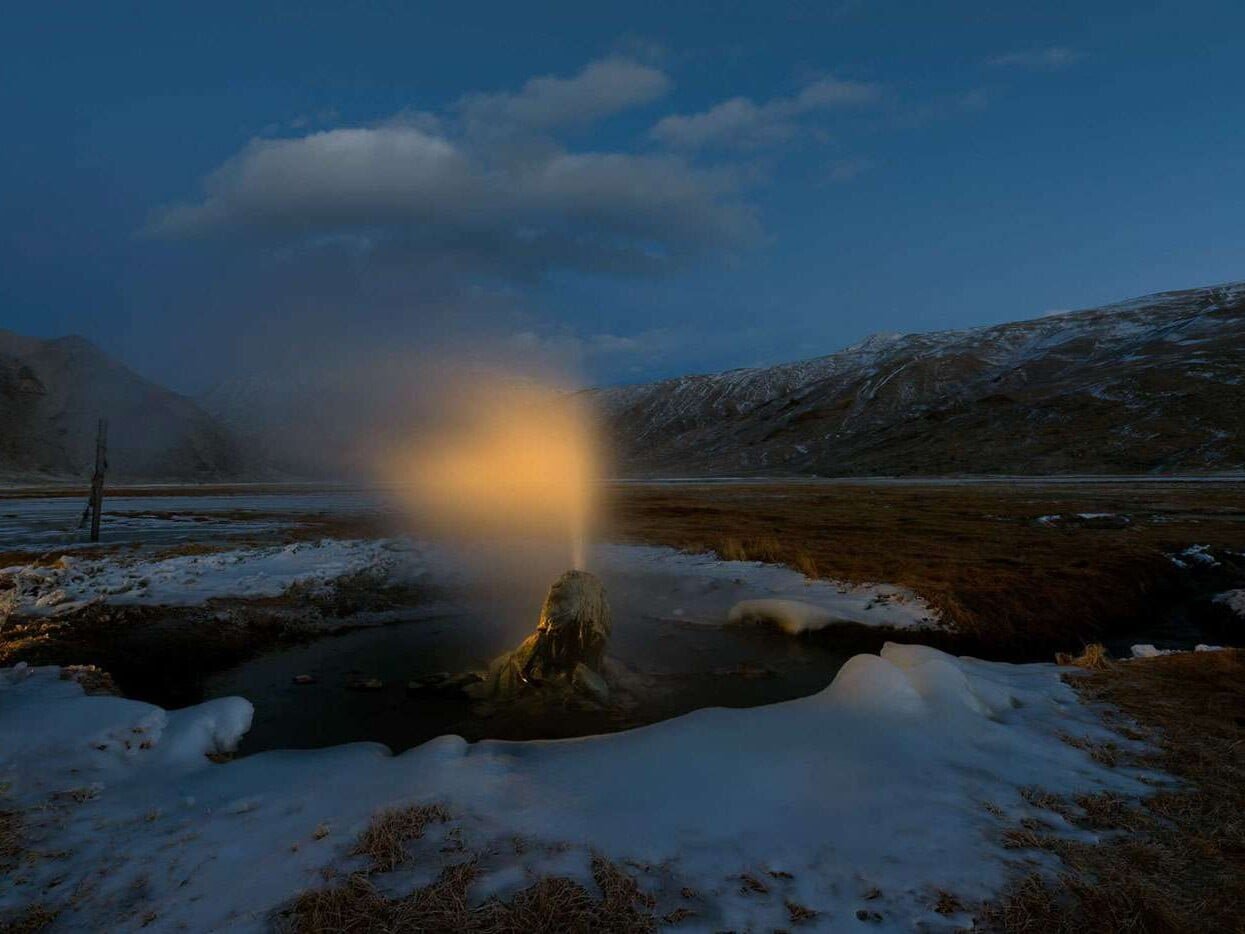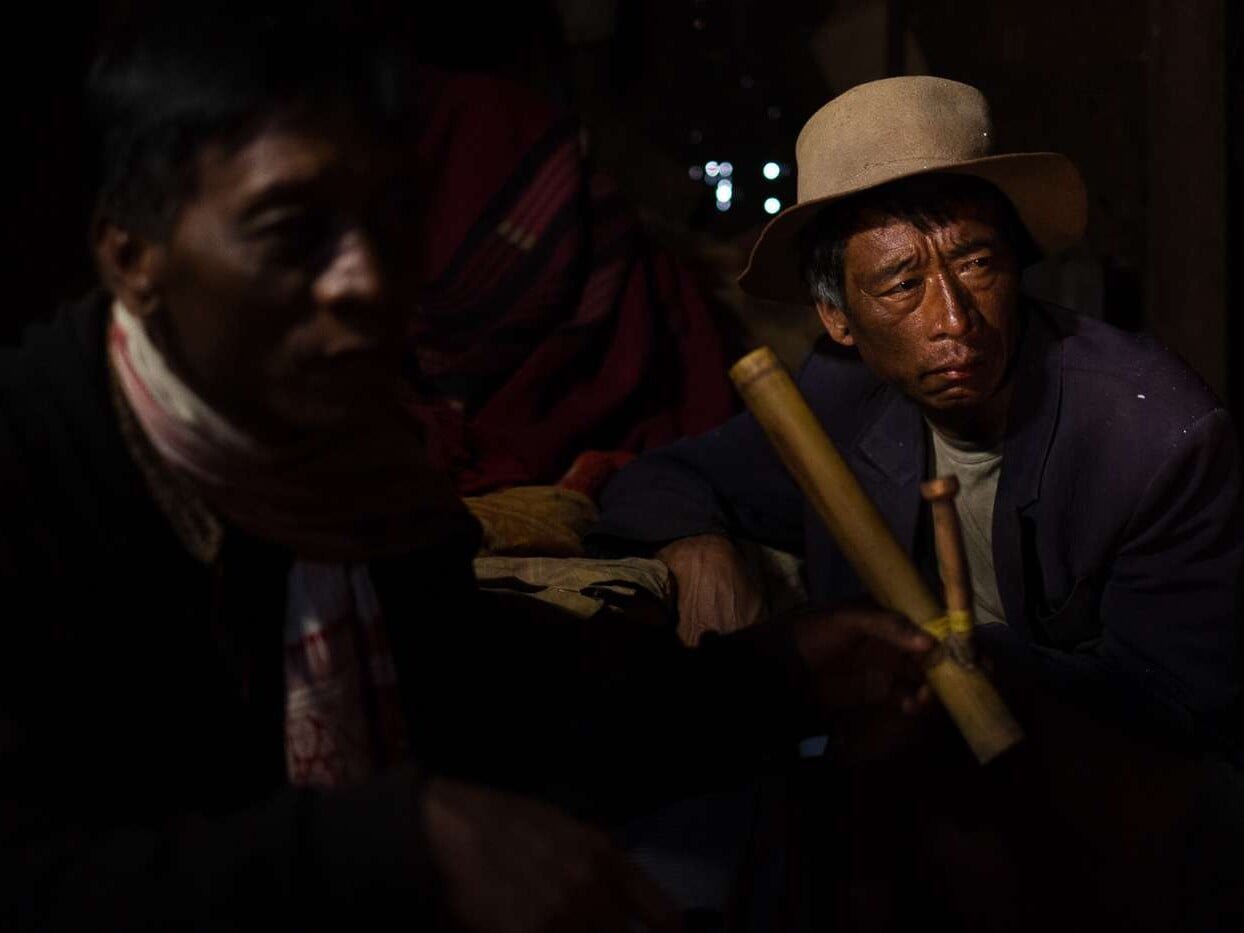Looking behind the veil
23 Sep 2018
Let me say up front, I love the gauzy veils of Rajasthan. Yes, I know: it’s an increasingly unfashionable viewpoint in a go-getting, thriving and rapidly urbanising India — and rightly so, as millions of well-educated, high-achieving Indian women compete with dated female stereotypes rooted deeply in traditional social practice.
But speaking purely as a photographer, the veil (ghunghat in the local parlance) is as inextricable a part of the Rajasthan scenery as the lugubrious camels, scratchy desert scrub, blazing blue skies and the bright red turbans of the male population. Lacerating pinks, acidic greens, sharp yellows and blazing reds create head-turning magnets for the camera: it’s almost as if the ladies are saying, well if you’re gonna expect me to hide behind this, I’m gonna make sure you turn and stare anyway.
Debate rages in intellectual circles as to the origins of this spectacular dress tradition. Many believe it had no place in history: the Hindu pantheon is full of powerful, battle-ready female deities, while the epic writings of the Mahabharata and the Ramayana are similarly chock-full with stories of female bravery and blood-thirsty derring-do. No blushing violets or faint-hearted protection-seekers then: these were women capable of being every bit as bold and aggressive as the best of their male counterparts.
Often, the blame falls squarely on the shoulders of the invading Mughals — the Muslims who invaded in medieval times and who went on to found India’s Mughal dynasties. Women were safest when invisible from the greedy eyes of men. And from there it was but a short conceptual hop to the veil as a form of modesty, respect and deference.
Today, ghunghat is being questioned and shrugged off everywhere across India. In fact, in southern India, it never ever got off the ground as a dress practice. Its stronghold is in Rajasthan and other mainly rural populations where the old patriarchal models prevail.
Which is yet another great reason to come shoot with us in Rajasthan. Those laser-bright veils will blow your histograms out the water and leave your sensors oversaturated for years to come.
Shoot this with us:
More India backstories and galleries…
Dancing with the gods
We embed ourselves in an elusive Hindu monastery and uncover dancing monks who draw on millennia-old epics for their storytelling performances.
1st October 2019
Northeast India: With the water buffalo Photo Gallery
What's on our camera backs today? We're with water buffalo in northeast India, following semi-nomadic herdsmen as they drive their beasts across the terrain, fighting flying pests with fire.
12th April 2019
Bengal’s brick kiln kids
In West Bengal, India, a brickyard tour uncovers striking photographs as well as unexpected truths about human motivation and migration.
5th April 2019
Smoke on the water
Assam, India, is so rich with people opportunities that sometimes it's hard to just stop and admire the scenery. We're glad we did.
29th March 2019
Majuli waterscapes Photo Gallery
A collection of images and opportunities from the river island of Majuli, in Assam, India.
18th March 2019
Delhi’s Yamuna – a toxic beauty
A Delhi photo tour takes in the sad state of the holy Yamuna river, and reflects on the unexpectedly positive outlook of many of its riverside dependents.
1st March 2019
Tea and tattoos
We stop for a cuppa with the Apatani tribe of Arunachal Pradesh and talk about their fading facial adornment and customs.
18th February 2019
Pushkar Camel Fair and Rajasthan Photo Gallery
A collection of images and opportunities from Rajasthan, India, taking in the Pushkar Camel Fair.
23rd December 2018
Varanasi and Agra – Photo Gallery
A collection of images and opportunities from two iconic Indian destinations.
16th December 2018
Fishing with the Mishing
Gone shootin': We join Majuli's Mishing fishermen on a foggy morning and return home with a splendid catch.
1st October 2018
A dark and magical place
On a shrinking river island in the Brahmaputra, the dark beauty of the the Vaishnavite monasteries keeps alive a centuries-old tradition of worship.
30th September 2018
What’s cooking?
We drop in on one of our favourite Rajasthan villages to meet old friends over supper. Just happened to have our cameras handy…
28th September 2018
Medicine man
An amble through a Rajasthan desert hamlet unexpectedly gets us up close and personal with a faith-healer.
23rd September 2018
Shapeshifters
The Bahurupi people are the proverbial quick-change folk artists. Ironically, change is catching up with them.
11th September 2018
Taches and turbans
A face-to-face photo-romp through Rajasthan, India, where beards, mustaches and turbans are taken mighty seriously.
8th September 2018
No country for old men
In Nagaland's deep jungle, we meet warriors who were at the top of their game — until the game changed.
5th September 2018
Ladakh in Winter Photo Gallery
A collection of images and opportunities from Ladakh in winter, amidst the Himalayan and Karakoram mountain ranges.
25th February 2018
Shooting Diwali in Rajasthan
As Pushkar Camel Fair becomes overloaded with photographers, timing is everything…
19th January 2018
Gujarat encounters: Where I go, my radio goes
In Gujarat, India, we run into a radio-crazy Ahir farmer with a shrewd grasp of world affairs.
19th May 2017
Angry birds: India’s bloody cockfighting business
Revered by many and reviled by others, cockfighting thrives in India.
5th May 2017
Paydirt: Shooting India’s Kushti wrestlers
There's photographic gold in India's dirt wrestling tradition – Kushti.
1st May 2017
Ladakh in Summer Photo Gallery
A collection of images and opportunities from Ladakh in summer, amidst the Himalayan and Karakoram mountain ranges.
22nd February 2017
India’s chai: The cup that cheers
India's roadside tea stalls are an eye-opening experience for photographers and tea-lovers.
7th January 2017
Ladakh: A study in contrasts
A photograph from our Ladakh photo tour prompts thoughts on contrast, photographic and otherwise.
26th November 2016
Five o’clock stubble
A little planning and a lot of luck gives us some shooting fun amidst burning stubble on an Assam tour…
28th May 2016
In God’s name: India’s Ramnami
Devotion, defiance and full-body tattoos… the vanishing way of life of this Hindu sect in India.
22nd May 2016
Varanasi: A matter of life and death
Varanasi's photography tour opportunities are extraordinary — and occasionally overwhelming…
15th April 2016
Visiting old friends in Ladakh
Shoot Director Sridhar reflects on shared moments with an old friend in Ladakh, India.
22nd March 2016
Sub-zero shooting adventures in Ladakh’s winter
It's cold but it's really hot: stunning opportunities on our new Ladakh Winter Photography Tour.
11th March 2016
Bleary-eyed sessions in a Nagaland dope den
We join in with the locals in a rum-and-opium party in Nagaland. High times in low light.
23rd February 2016
Village encounters in deep Rajasthan
On the road to Pushkar Camel Fair, we find a Rajasthan desert hamlet with pleasant photographic surprises on every corner…
13th February 2016

